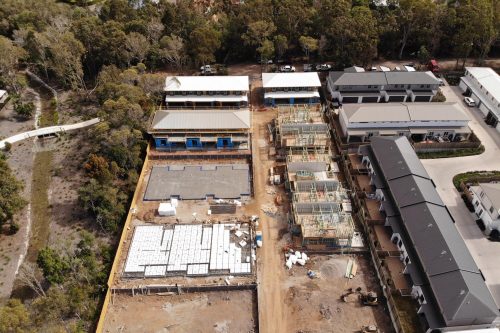Wind classification refers to the wind speed that can affect a construction site. Different locations experience different wind speeds, which are also affected by the surroundings of your site, such as trees, water, other homes, etc.
Knowing the wind classification before a project commences is a very important consideration and is outlined in the Australian Standards (AS 4055-2012) so that engineers and builders can ensure the best outcome.
Knowing your area’s wind classification is crucial for every building project as it can influence your:
- Structure’s durability
- Construction cost
- Bracings, tie-down fixings and design
- Framing & trusses
- Cladding
- Windows
Terrain Category
The wind classification & speed is influenced by the terrain it passes over as it approaches the structure. The terrain category classifications are as follows:
- CATEGORY 1 Open terrain with little to no obstructions and enclosed water surfaces. For example, flat, treeless, poorly grassed plains; rivers, canals and lakes; and enclosed bays less than 10km in the wind direction.
- CATEGORY 1.5 Open water surfaces, for example, coastal waters, large open bays on seas and oceans, lakes and enclosed bays extending greater than 10km in wind direction.
- CATEGORY 2 Open terrain, including grassland, with well-scattered obstructions having heights typically from 1.5-5m with no more than two obstructions per hectare.
- CATEGORY 2.5 Terrain with a few trees or isolated obstructions, for example, the terrain in developing outer urban areas with scattered houses.
- CATEGORY 3 Terrain with numerous closely spaced obstructions with heights typically between 3-10m, for example, suburban housing.

Terrain Category Examples. Credit Stratco
Topography
The topographic classification determines the effect of wind on a structure due to its location and height on a hill, ridge or escarpment. Houses near the top of hills generally experience higher wind speeds, contour maps can help find the topography class.
Shielding
Before commencing, shielding must be determined applicable to the house estimating likely development five years forward from the assessment date. ‘Full shielding’ applies to houses with two rows of houses on all four sides; ‘Partial shielding’ applies to houses with at least one row of housing on all four sides; ‘No shielding’ applies to houses where there are no houses on any sides.
Where do we come in?
Our geotechnical engineering team can assess your site’s terrain, topography and shielding to determine your wind classification so that you and your loved ones can sleep-easy knowing that your home is safe and sturdy.










